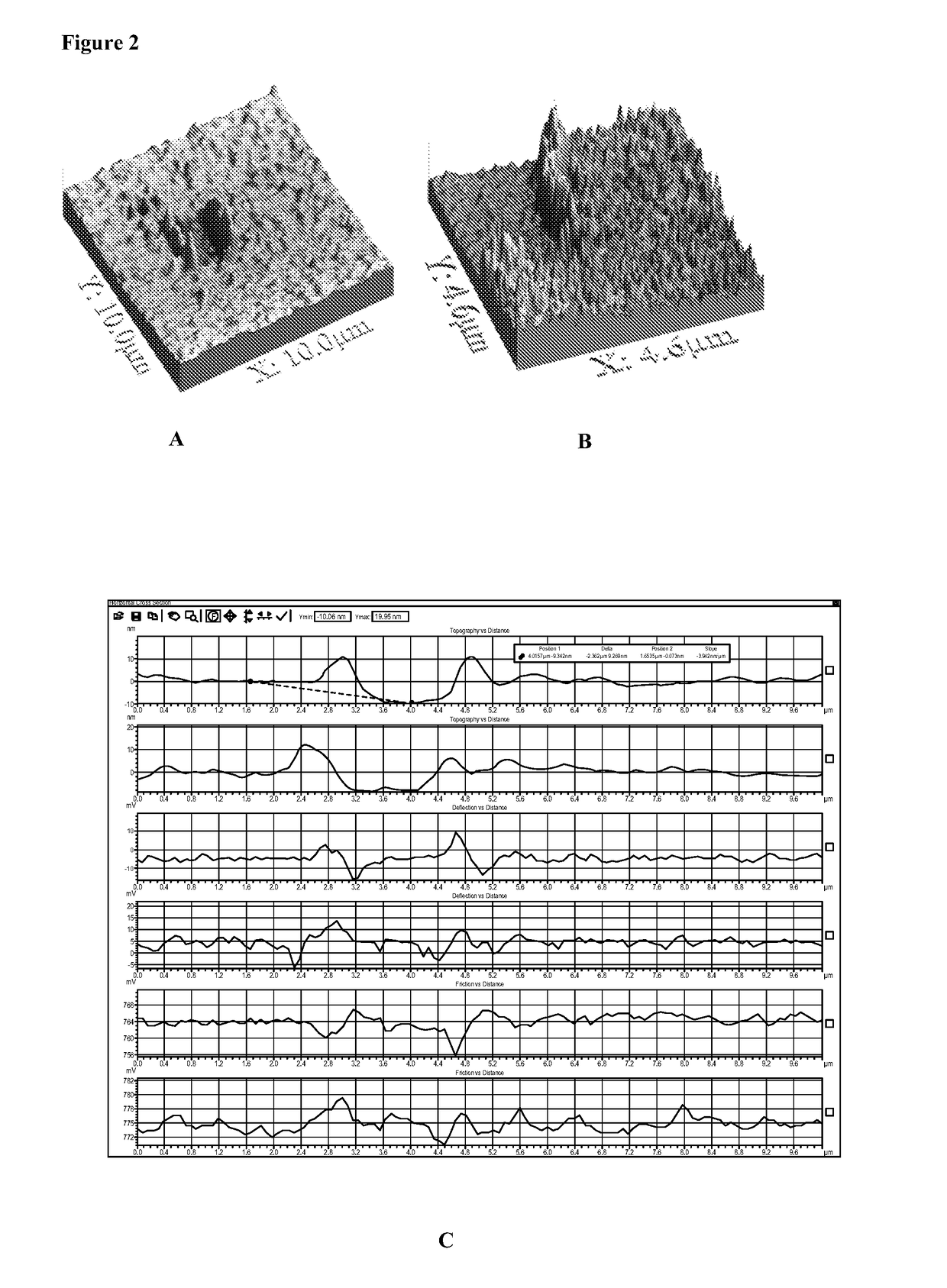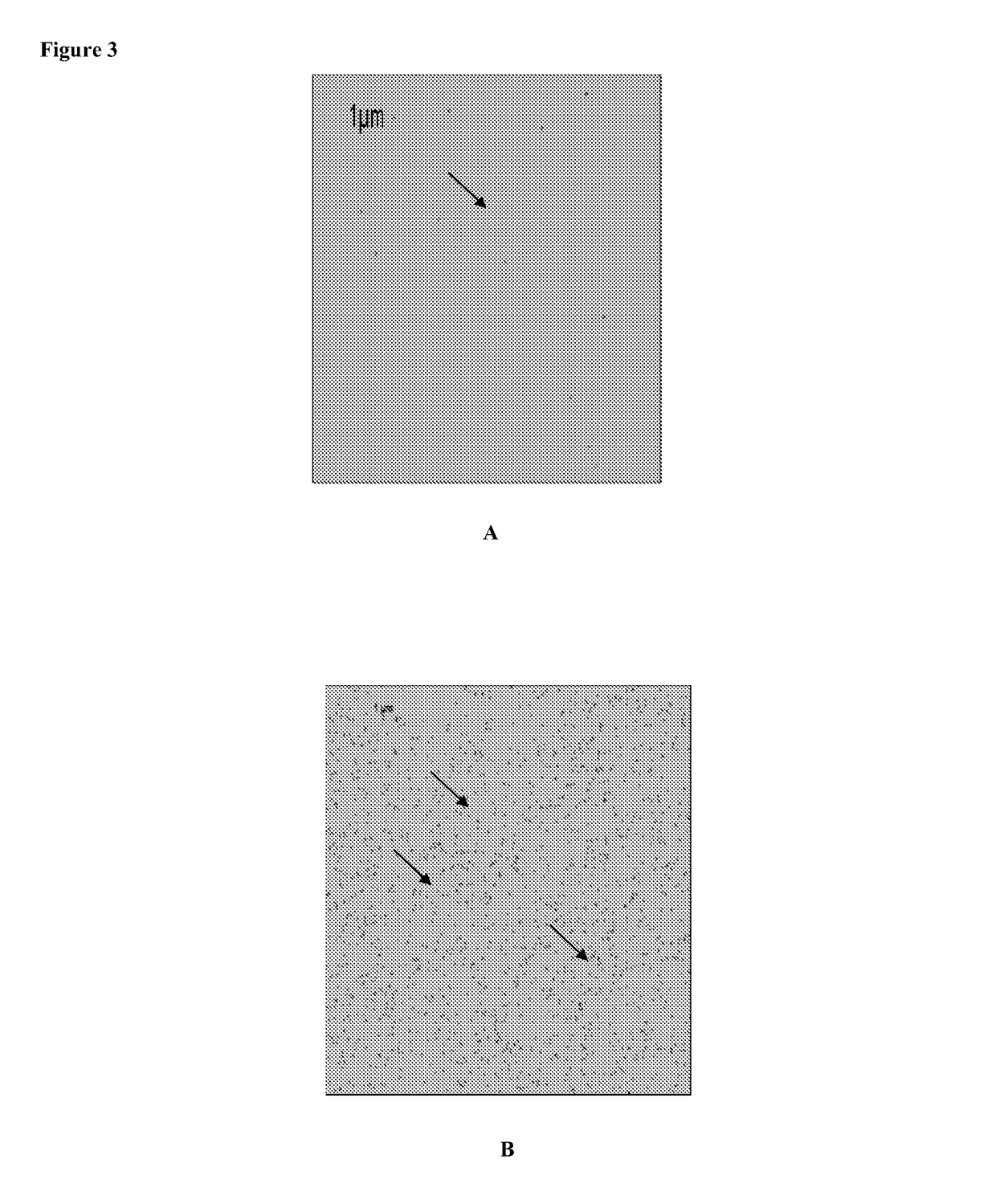Biocoated piezoelectric biosensor platform for point-of-care diagnostic use
a biosensor and biosensor technology, applied in the direction of instruments, analysing fluids using sonic/ultrasonic/infrasonic waves, ultrasonic/sonic/infrasonic waves, etc., can solve the problems of low sensitivity, high variability, and current state of art poc devices, etc., to achieve rapid poc diagnosis, simple manufacturing process, cost-effective
- Summary
- Abstract
- Description
- Claims
- Application Information
AI Technical Summary
Benefits of technology
Problems solved by technology
Method used
Image
Examples
example 1
Manual Processes for Coating of Biosensor Chips Bearing Neutravidin and Biotinylated Antibody
[0105]All of these methods have been actually performed.[0106]a. Coating without fixation: Clean and activate LiNbO3 surfaces for about 1-10 sec at atmospheric pressure with a plasma generating device (e.g. Plasma Treat USA, Elgin, Ill.) before application of avidin which is accomplished by inkjetting avidin in a solution containing 50% glycerol in PBS at an avidin concentration of 0.5 mg / ml, followed with brief drying using warm air from a heat gun at about 50° C. or drying at room temperature for about 30 min to bond the avidin to the surface, the biosensor is now ready for use or packaging.
[0107]Optionally, deposition of neutravidin is followed by a fixing step.[0108]b. Coating with thermal fixation: Neutravidin is applied by ink jetting as described in Example 1a. The neutravidin may be fixed to the piezo substrate by heating to about 30-50° C. with an infrared heat lamp for up to 30 min...
example 2
Automated Coating Processes
[0112]a. Automated Direct Coating Mode for Neutravidin Biosensors:
[0113]Online manufacturing of some embodiments involves deposition of neutravidin coating on piezo crystals affixed to the lower portion of the biosensor housing that is then mounted on a conveyor belt. After plasma treatment, the sensor is moved to the neutravidin inkjetting station and coated with 5-10 μl of fluid containing_0.01 to 5.0 mg / ml_neutravidin; or 0.01-2.0 mg / ml; or 0.01-1.0 mg / ml by weight per 0.5 cm square area. The fluid is evaporated and the neutravidin fixed on the biosensor by brief exposure to heat from a heat gun (about 50° C.). The upper cover of the housing is then affixed to form the leak proof fluid chamber of the biosensor cartridge.[0114]b. Automated Coating Mode for Coated Neutravidin Having Biotinylated Antibody:
[0115]A similar inkjet process as described above in 2a is used to coat the biotinylated antibody diluted to a suitable dilution in a non-drying stabiliz...
example 3
Chlamydia trachomatis Detected on the Biosensor
[0120]Experiments were conducted with C. trachomatis, an obligate intracellular bacterium which causes a sexually transmitted disease in both women and men. The procedures used to coat avidin and antibody are described in Example 1. The antibody used is a monoclonal antibody against the major outer membrane (MOMP) of C. trachomatis (Abcam) biotinylated and used at 0.25 μg / ml. C. trachomatis was obtained from Microbia and was suspended in PBS / Buffer at a concentration of 105 per ml in a similar experiment, monoclonal antibody directed against C. trachomatis elementary body lipopolysaccharide (Medix). A aliquot of elementary bodies (EB) of 105 EB+0.25 μg / ml of biotinylated anti-EB LPS was incubated for 30 minutes at RT and then added to the chip. FIGS. 6 and 7 depict the results of experiments conducted with these specific infectious antigens. FIG. 6 is a series of black and white tracings of a fluorescent microscopy slide taken of an AMT...
PUM
| Property | Measurement | Unit |
|---|---|---|
| depth | aaaaa | aaaaa |
| depth | aaaaa | aaaaa |
| depth | aaaaa | aaaaa |
Abstract
Description
Claims
Application Information
 Login to View More
Login to View More - R&D
- Intellectual Property
- Life Sciences
- Materials
- Tech Scout
- Unparalleled Data Quality
- Higher Quality Content
- 60% Fewer Hallucinations
Browse by: Latest US Patents, China's latest patents, Technical Efficacy Thesaurus, Application Domain, Technology Topic, Popular Technical Reports.
© 2025 PatSnap. All rights reserved.Legal|Privacy policy|Modern Slavery Act Transparency Statement|Sitemap|About US| Contact US: help@patsnap.com



